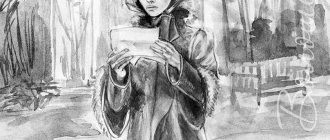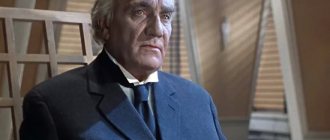- Summary
- /
- Different
- /
- Life of Archpriest Avvakum
The personality of Archpriest Avvakum is inextricably linked with the reform of Patriarch Nikon, which marked a church schism. He became an ardent opponent of the “right” church books, changes in church rituals, and dogma. His image was used in his painting by the artist S. Miloradovich, based on the life of Archpriest Avvakum, which was written by him, several documentaries and feature films were shot. Who would this person be?
Avvakum Petrov was born in 1620 in the Nizhny Novgorod region in the village of Grigorovo. When the boy was 15 years old, his father died. His mother loved Avvakum dearly, devoted a lot of time to his Christian upbringing and, with her pious example, established him in Orthodoxy. At the age of seventeen, having listened to her instructions, Avvakum married the orphan and dowry Nastasya Markovna. This union was happy, but the young man at that time did not even suspect that his wife would become not only a companion, but also an assistant in his life’s work.
At twenty-two, Avvakum became a deacon, and a couple of years later a priest. Young and truth-loving, he quickly incurred the wrath of his fellow villagers. Habakkuk took a strict moral position, condemned drunkenness, theft, adultery, and stood up for the weak and sick. He received repeated punishment for his convictions: they beat him, and once they even tried to drown him in the Volga.
Archpriest Avvakum left for Moscow, where he joined the circle of the Zealots of Ancient Piety and became part of the inner circle of Tsar Alexei Mikhailovich. As they gathered, the “zealots” discussed issues of faith and the moral purification of the church. The idea of the need to correct liturgical books was increasingly voiced. The fact is that from the moment of the adoption of Christianity in Russian liturgical books, errors had accumulated by that time, arising as a result of mechanical rewriting. This led to unrest and misunderstanding of church services by parishioners. Here the opinions of the “zealots” differed. Avvakum in his life writes about it this way: “We thought, having come together: we see how winter wants to be, our hearts are cold, and our legs are trembling.” The situation was complicated by the fact that the young Tsar Alexei also intervened in the conflict.
The state learned the lessons of the Time of Troubles well and sought to control both society and the church. The adoption of the Council Code marked the final attachment of peasants to the land, and townspeople to the suburbs. In addition, the document consolidates the right of the state to regulate church affairs. On the initiative of Alexei Mikhailovich and Patriarch Nikon, church reform began in 1653. Books had to be rewritten according to Greek models, changes were made to church rituals and life. Church demolition began throughout Rus'. Nikon personally replaced the two-finger sign with a three-finger one, thereby destroying the symbol that was familiar and holy to all residents of Rus' from childhood.
Archpriest Avvakum pointedly refused to accept new rituals; in the reform he saw a deliberate rejection of national traditions, the forced imposition of an alien culture. In his prayer, Habakkuk proceeded from the fact that it is impossible to change the fundamental foundations of the life of the church, because what is permissible to change at least once can then be changed indefinitely. And such faith will no longer be the unshakable basis of the worldview. For his views, Archpriest Avvakum was arrested and imprisoned in a dungeon. Then they were exiled to Tobolsk with their wife and small children, then they were sent to Transbaikalia to the detachment of governor Afanasy Pashkov. In this campaign, Avvakum was supposed to fulfill the duties of the regimental priest. During seven years of wandering, his family went through hunger, illness and numerous bullying by governor Pashkov. The archpriest's two little sons died on the way.
In 1663, Avvakum was finally allowed to return to Moscow. The king urged him to renounce his beliefs, but the wanderer remained adamant. In the reform, Habakkuk saw the danger of the church falling into the hands of the state.
Finally, in 1667, he was again exiled along with his associates to Siberia and imprisoned. There he wrote his work “The Life of Archpriest Avvakum, written by himself.”
In 1682, Habakkuk and his allies were burned alive. But his voice had already been heard, he was supported by many in the Russian church, the church called this part of Russian society schismatics, the state declared them outlaws.
The life of Archpriest Avvakum is an example of how one must defend the truth, how to learn to stand on one’s own without fear of being rejected by society.






